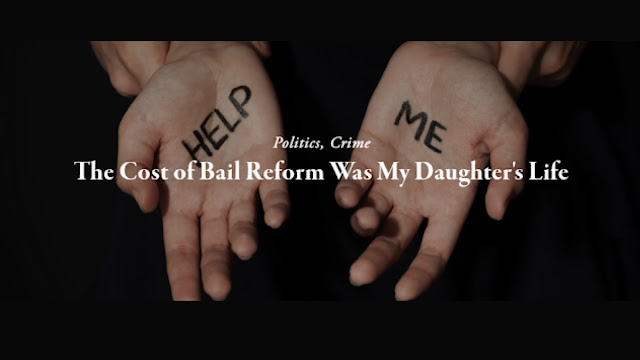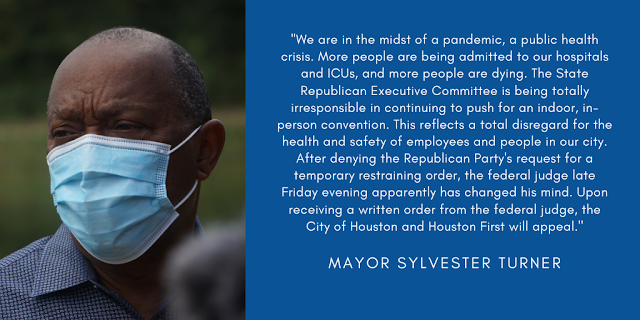The Illusion of Risk Assessments
The Illusion of Risk Assessments: The False Promises of the National Criminal Justice Reform Movement
by Ken W. Good
Much like a magic trick, over the past decade, the criminal justice reform movement has presented a great illusion to the public. Magic is based upon misdirection, in which the audience is set-up to anticipate what will happen next. So it is with reformers who have hoped to fool the public through sleight of hand. Only in this case, it's not a rabbit they are pulling out of a hat, it is a risk assessment tool they have sold as the answer to bail reform. Through its adoption and implementation, risk assessment has been presented as the one-size-fits-all solution. But time and evidence has revealed that these tools are made up of many false promises.
The purpose of bail is to ensure that a defendant will make all court appearances in a pending criminal case. Generally, the bail amount is set high enough to ensure appearance, taking into consideration factors including, the underlying criminal charge, defendant's criminal history, ability to pay and any risk to public safety. Historically, the higher the perceived risk, the higher the bond.
This fundamental structure of bail has been expanded to address changing needs. As urban areas grew, they looked for ways to efficiently and cost-effectively process large numbers of people through jails. The use of bail schedules also arose.
In Houston, plaintiffs in the federal case of O'Donnell v. Harris County alleged procedural due process violations because poor people had no opportunity to ask for a deviation from the scheduled bail amount. Further, at their initial magistration hearings, defendants were being told not to speak because anything they said could be used against them in their cases. The Fifth Circuit Court of Appeals subsequently ruled that Harris County violated the due process clause of the federal constitution. In a subsequent opinion in the O'Donnell case, the Fifth Circuit stated that once procedures were put in place to protect the poor, the appellate review reverted to a "rational basis review" which is the most favorable review for the state and usually results in approval of the state's action.
After O'Donnell, reformers pushed for wholesale changes of the bail system. The risk assessment tool was proposed as the magic bullet that would solve the problem.
Initially, reformers made many promises about risk assessment tools that they failed to deliver. In Texas, like many other jurisdictions, courts do not track failures to appear, nor is there any way to verify whether a risk score is correct because the underlying data is not being tracked -- nor are there plans to do so in the future. As a result, the portion of the tool that considers the risk of failure to appear will always undervalue this component. These are critical issues because they mean the tools are fundamentally inaccurate.
Because failures to appear have increased under the use of risk assessment tools, some reformers have sought to change the debate by arguing that the only meaningful consideration should be the risk of intentional absconding. In their eyes, forgiven are the obstinate and forgetful, or the defendants who just "does not want to receive bad news."
This shift on the part of reformers should be construed for what it is: a concession that their model is wrong because it goes to the very heart of the purpose of bail; to ensure that someone will show up for their court appearances. Any failure to appear does great damage to the criminal justice system. A case must be put on hold. Victims are denied resolution and everyone must wait for the defendant to return.
The Vera Institute has argued that any bail reform will result in a system with a 40 percent failure to appear rate and that this should be acceptable. Unfortunately, they do not realize that this would shut down our criminal justice system. As an example, in some urban areas on average 1,000 people per week appear for court on average. Based on a 40 percent failure to appear rate, after one week, 1,400 people would need to appear in the second week to get back on track. It is simple arithmetic. Over a short period of time, the number of individuals failing to appear and the number of cases put on hold would bring the system to its knees.
Despite the rhetoric, there is no consensus on the positive value of risk assessment tools, with many scholars arguing that have had no impact on the racial makeup of the jail population and have not improved the criminal justice system. In 2019, some of the largest digital companies in the world issued a statement stating that risk assessment tools were rushed to use without proper study. These organizations, including Google and Amazon, pointed out that while algorithms were good at predicting what groups of people would do, they were terrible in their predictions about individuals.
For many reasons the supporters of risk assessments have all peeled away. Over 100 Civil Rights, Digital Justice and Community Organizations raised questions about Pretiral Risk Assessments. For more information CLICK HERE. The Pretrial Justice Institute withdrew its support and now opposes Pretrial Risk Assessments. CLICK HERE. Also, California voters in November 2020, rejected risk assessments in a state wide ballot. CLICK HERE.
The purveyors of criminal justice reform have worked hard to sell the illusion of risk assessment tools. After a decade of pushing for bail reform, their advocacy of a poorly-conceived algorithm can be likened to a third-rate magician trying to saw a woman in half, only to realize halfway through that he has no idea how to actually pull off the trick. The setup to this grand magic trick looked so promising and convinced many that it was the solution. But time has shown that risk assessments cannot fulfill the false promises made and it is clear that they should no longer be a part of criminal justice reform. Like the hapless magician with the saw in his hand, let's call off this performance before it's too late.
For more information about risk assessments-
CLICK HERE to check out our past newsletter "All About Risk Assessments- The Four Failures of Risk Assessments"
Other articles:
Pamphlet "The Growing Risk of Risk Assessments" CLICK HERE







Comments
Post a Comment